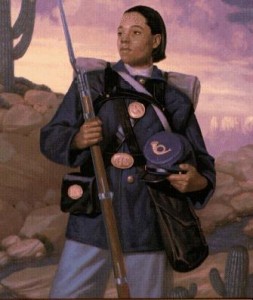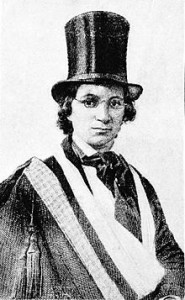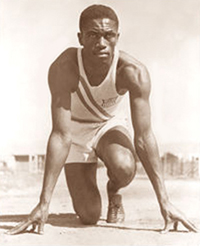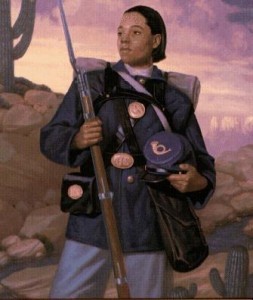
We celebrated black achievement and innovation all year here at P.O.U., since it’s the last week of Black History month it’s time for some more interesting facts about Black History.
Cathay Williams was the one and only female Buffalo Soldier, posing as a man named William Cathay to enlist in the 38th infantry in 1866. She served for two years before a doctor discovered that she was a woman, leading to her discharge.
Journalist Ida Wells-Barnett refused to give up her railcar seat for a white man in 1884, and bit a conductor on the hand when he tried to force her. She was dragged off the train. She sued the railroad and initially won, but the decision was overturned.
 Black ingenuity helped devise creative and effective plans to escape enslavement. In 1848, husband-and-wife team William and Ellen Craft made it to the North, and eventually England, when she dressed as a white man and he posed as one of her slaves. A year later, Henry “Box” Brown literally mailed himself to freedom in a shipping box during a 27-hour trip from Richmond to Philadelphia.
Black ingenuity helped devise creative and effective plans to escape enslavement. In 1848, husband-and-wife team William and Ellen Craft made it to the North, and eventually England, when she dressed as a white man and he posed as one of her slaves. A year later, Henry “Box” Brown literally mailed himself to freedom in a shipping box during a 27-hour trip from Richmond to Philadelphia.
Brown became a well-known speaker for the Anti-Slavery Society and got to know Frederick Douglass. He was nicknamed “Box” at a Boston antislavery convention in May 1849, and thereafter used the name Henry Box Brown. He published two versions of his autobiography, Narrative of the Life of Henry Box Brown; the first, written with the help of Charles Stearns and conforming to expectations of the slave narrative genre, was published in Boston in 1849. The second was published in Manchester, England, in 1851 after he had moved there. While on the lecture circuit in the northeastern United States, Brown developed a moving panorama with his partner James C. A. Smith. They separated in 1851.
Douglass wished that Brown had not revealed the details of his escape, so that others might have used it. When Samuel Smith attempted to free other slaves in Richmond in 1849, they were arrested. The year of his escape, Brown was contacted by his wife’s new owner, who offered to sell his family to him, but the newly free man declined. This was an embarrassment within the abolitionist community, which tried to keep the information private.
Brown is known for speaking out against slavery and expressing his feelings about the state of America. In his Narrative, he offers a cure for slavery, suggesting that slaves should be given the vote, a new president should be elected, and the North should speak out against the “spoiled child” of the South.
Ellen and William Craft were slaves from Macon, Georgia in the United States who escaped to the North in December 1848 by traveling openly by train and steamboat, arriving in Philadelphia on Christmas Day. She posed as a white male planter and he as her personal servant. Their daring escape was widely publicized, making them among the most famous of fugitive slaves. Abolitionists featured them in public lectures to gain support in the struggle to end the institution. As the light-skinned mixed-race daughter of a mulatto slave and her white master, Ellen Craft used her appearance to pass as a white man, dressed in appropriate clothing.
Threatened by slave catchers in Boston after passage of the Fugitive Slave Act of 1850, the Crafts escaped to England, where they lived for nearly two decades and reared five children. The Crafts lectured publicly about their escape. In 1860 they published a written account,Running a Thousand Miles for Freedom; Or, The Escape of William and Ellen Craft from Slavery. One of the most compelling of the many slave narratives published before the American Civil War, their book reached wide audiences in Great Britain and the United States. After their return to the US in 1868, the Crafts opened an agricultural school for freedmen’s children in Georgia and worked the farm until 1890.
Ellen planned to take advantage of her appearance to pass as white while they traveled by train and boat to the
North, with William to act as her slave and personal servant. During that time period slaves traveled with their masters across states all of the time, because of that their actions would not be questioned. Their escape is known as the most ingenious escape plot in fugitive slave history, even more ingenious than “Henry Box Brown”. During their escape they traveled on first class trains, stayed in the best hotels and even dined with a steamboat captain.
To carry out this plan, Ellen also had to pass as male, since a single white woman would not have been traveling alone with a male slave in those years. She cut her hair and bought appropriate clothes, traveling in jacket and trousers. William used his earnings as a cabinet-maker to buy clothes for Ellen to wear to help her pass as a white slave holder. They carefully selected clothes that white male slave holders would wear during that time period. Ellen’s wardrobe consisted of a top hat, cravat, jacket, tartan, and a tassel all of these things signified slave holder status. William even fixed her hair up to make her look like a white man, William made sure that her appearance was convincing.
Ellen had to use her own interpretation of a white man to pass as a rich white slaveowner. She wore her right arm in a sling to hide the fact that she did not know how to write. They traveled to nearby Macon for a train to Savannah. Although the Crafts had several close calls along the way and neither could read nor write, they were successful in evading detection. On December 21, they boarded a steamship for Philadelphia, where they arrived early on the morning of Christmas Day.
Eatonville, Florida, the childhood home of writer and cultural anthropologist Zora Neale Hurston, is also the first town in the country to be incorporated by African-Americans.
 Baseball legend Jackie Robinson had an older brother, Matthew Robinson, who was also a star athlete in his own right. He won a silver medal in the 200-yard dash in the 1936 Olympics — coming in second to Jesse Owens.
Baseball legend Jackie Robinson had an older brother, Matthew Robinson, who was also a star athlete in his own right. He won a silver medal in the 200-yard dash in the 1936 Olympics — coming in second to Jesse Owens.
Information courtesy of Wikipedia.org and The Stir- Cafe Mom.

